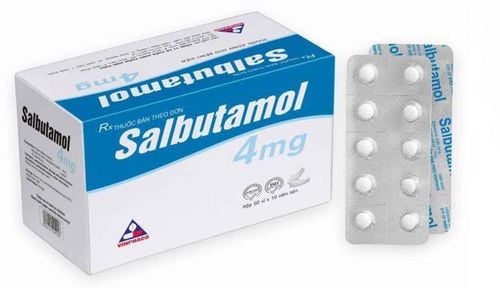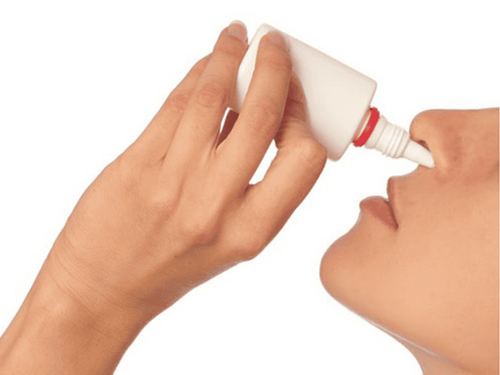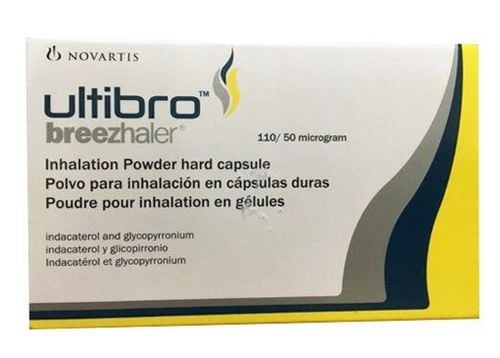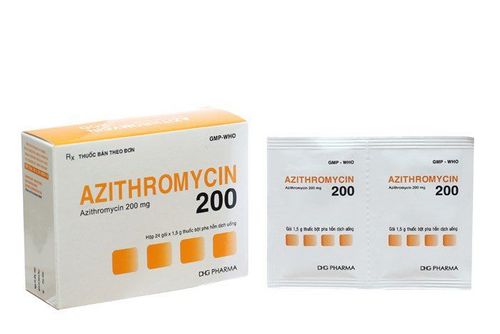This is an automatically translated article.
Post written by Master - Doctor Mai Vien Phuong - Head of Department of Gastrointestinal Endoscopy - Department of Medical Examination & Internal Medicine - Vinmec Central Park International General HospitalThe most commonly reported pulmonary symptoms in the elderly include shortness of breath, cough, and decreased exercise tolerance. These symptoms can be caused by a variety of pulmonary, as well as extrapulmonary, conditions. We will learn more about it in the article below.
1. Effects of aging on the respiratory system
The respiratory system is a group of organs that work together to take in oxygen and expel carbon dioxide when you breathe. When you breathe in, oxygen-rich air travels down your windpipe and into tiny tubes located in your lungs. These tubes are called bronchial tubes or airways. They branch into many smaller and thinner tubes called bronchioles. At the end of the bronchioles are small, round air sacs called alveoli, surrounded by tiny blood vessels called capillaries. As air enters the alveoli, oxygen moves through the capillaries and into the bloodstream. At the same time, carbon dioxide moves from the capillaries into the alveoli so you can exhale.
Your respiratory system ages over time and these functions gradually decline over time. Similar to other muscles in your body, the muscles that support your breathing become weaker. The weakening of these muscles can make it impossible for you to inhale and exhale enough air. As a result, you may begin to breathe more shallowly to compensate, especially if you are sick or in pain. Your lungs also become stiffer as you age, making them expand and contract more easily. This can make it harder for you to breathe. In addition, certain changes occur in the nervous system that make coughing less effective. When you are unable to clear mucus from your lungs through coughing, large amounts of particles can build up in the airways.
All of these age-related changes can increase susceptibility to respiratory infections, such as pneumonia and influenza. You may also notice impaired exercise endurance or a decreased ability to exercise intensely, such as running and cycling. However, even as you get older, you can still perform normal activities without much difficulty.
In healthy individuals, these age-related changes rarely lead to symptoms. Importantly, age-related changes in the lungs contribute to the effects of heart and lung diseases, especially those caused by the devastating effects of smoking.
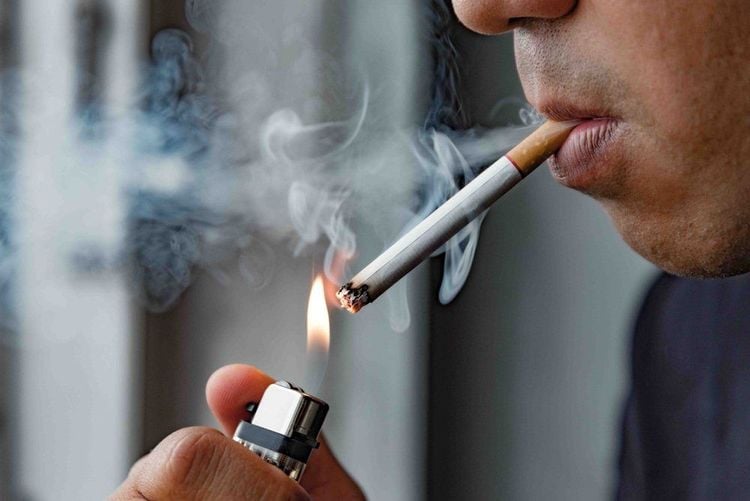
2. When the cause isn't just old age
If you're having more serious breathing problems, such as constant coughing and wheezing, you may have a condition called chronic obstructive pulmonary disease (COPD). COPD is a group of progressive lung diseases that include emphysema and chronic bronchitis. This condition is usually caused by smoking or exposure to secondhand smoke. However, exposure to other lung irritants over time, such as air pollution and chemical fumes, can also contribute to the development of COPD.People with COPD have difficulty breathing because less air goes in and out of the airways. This can happen for one or more of the following reasons:
The lungs, airways and air sacs lose their elasticity. The wall between the air bags is destroyed. The walls of the airways thicken and swell. The airways produce more mucus than usual, which can clog the airways. COPD can severely limit your ability to participate in the types of physical activities you enjoy. It can even limit your ability to perform basic everyday tasks, such as showering or mopping.
Common symptoms of COPD include:
Persistent cough with a lot of mucus. Shortness of breath, especially during exercise. Wheezing while breathing. Chest tightness. These symptoms are not a natural part of the aging process. So, see your doctor if you start experiencing similar symptoms. It is important to get treatment as soon as possible because COPD can lead to serious complications. Once the disease progresses, your symptoms can get much worse. You should go to the emergency room immediately if you experience the following symptoms:
Difficulty speaking or breathing. Blue or gray or purple fingernails or lips. Lack of mental alertness. Heart rate is very fast.

3. Causes of COPD
Most people with COPD are at least 40 years old and have at least some history of smoking. The longer and more often you smoke, the higher your risk of COPD.In addition to cigarette smoke, cigar smoke, pipe smoke and secondhand smoke can cause COPD. Your risk of COPD is even greater if you have asthma and smoke.
Other causes: You can also develop COPD if you are exposed to chemicals and fumes in the workplace. Long-term exposure to air pollution and inhalation of dust can also cause COPD.
In developing countries, along with tobacco smoke, homes are often poorly ventilated, forcing families to breathe in the fumes from burning fuels used for cooking and heating.
COPD can also develop according to genetic predisposition. An estimated 5 percent of people with COPD have a deficiency in a protein called alpha-1-antitrypsin . This deficiency causes poor lung health and can also affect the liver. In addition, there may also be other genetic factors involved.
4. Diagnosis of COPD
When you visit your doctor, they will first ask about your symptoms and do a physical exam. They may also order a chest X-ray or a CT scan of your lungs. These imaging tests can show signs of COPD and help your doctor rule out other possible conditions.However, in most cases, your doctor will use a spirometry test to diagnose COPD. During this test, you breathe as hard as you can into the mouthpiece attached to the spirometer. This is a handheld device that measures how quickly you can move air out of your lungs and how much air is expelled. As you age, the amount of air you can expel from your lungs decreases. However, the air you can exhale is reduced even more when you have COPD. Your doctor will tell you the difference. Sometimes, your doctor may refer you to a specialist called a pulmonologist for a broader examination.
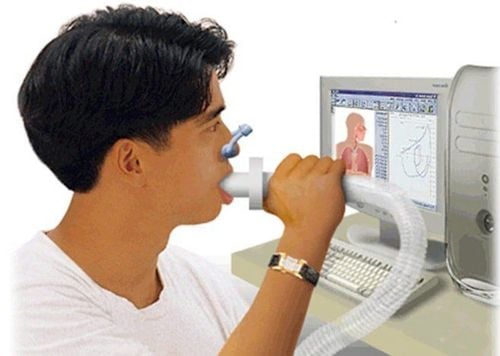
5. Treatment of COPD
If you are diagnosed with COPD, your doctor will most likely give you medication to help you breathe. Includes:Bronchodilators . Corticosteroids . Anti-anxiety medication. Opioids. Your doctor will also recommend making certain lifestyle adjustments along with medical treatment. These lifestyle changes may include:
Quitting smoking. Avoid secondhand smoke. Eat a diet of mostly natural foods, such as vegetables and fruits. Supplement vitamins and minerals. Exercise low to moderate intensity at least three times per week. In severe cases of COPD, oxygen therapy or surgery may be needed.
You can reduce your risk of COPD by not smoking and staying away from secondhand smoke. If your job requires you to be exposed to chemicals, use respiratory protection. Especially when you work in a bakery, a textile factory, and a coal mine.
6. Conclusion
COPD most commonly occurs in people over the age of 40, but it is not a natural part of the aging process. You should call your doctor right away if you are having symptoms of COPD. Although there is no cure for COPD, you can help reduce its effects by detecting and treating it as early as possible. You can also improve your outlook by eliminating known risk factors, regardless of your age.Please follow the website: Vinmec.com regularly to update many other useful information.
Please dial HOTLINE for more information or register for an appointment HERE. Download MyVinmec app to make appointments faster and to manage your bookings easily.
References: lung.org, mayoclinic.org, osha.gov, nih.gov, copdfoundation.org




